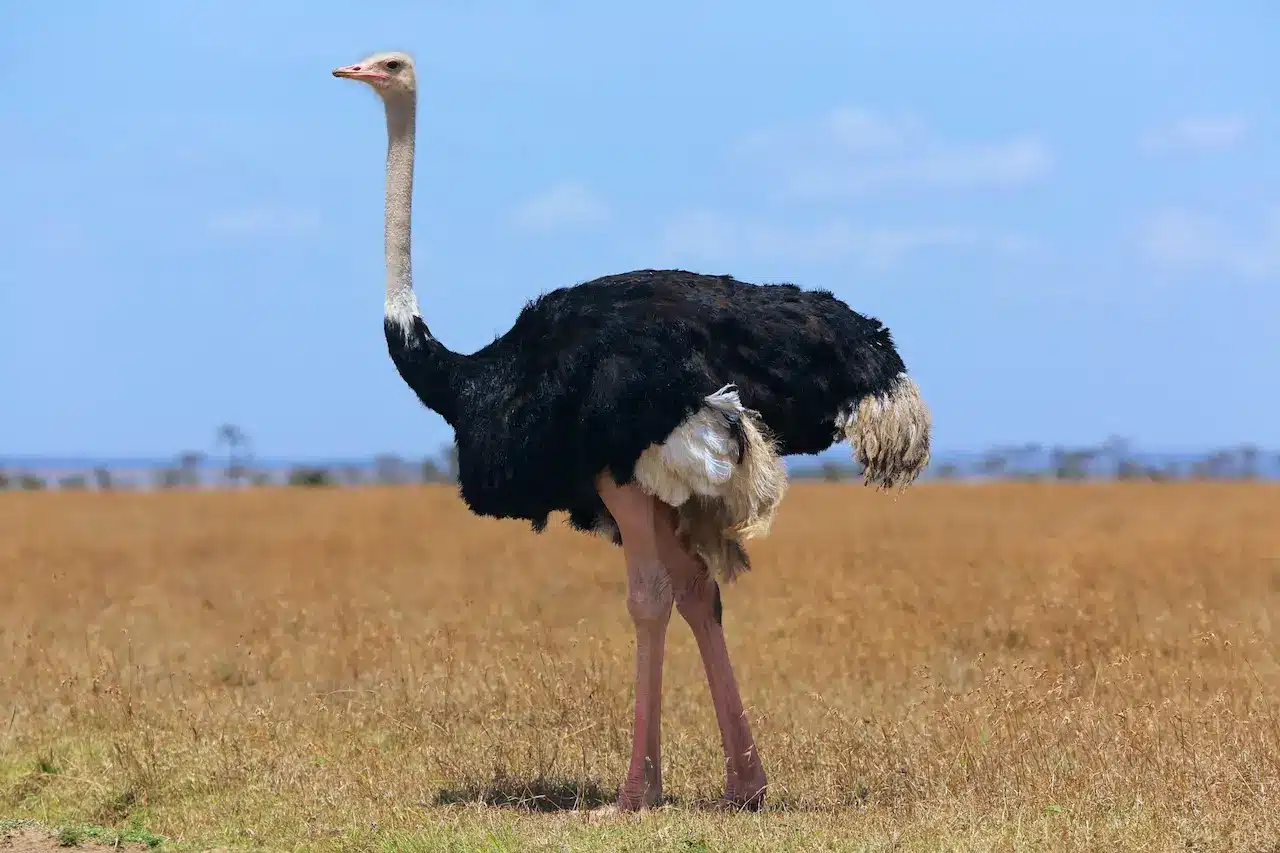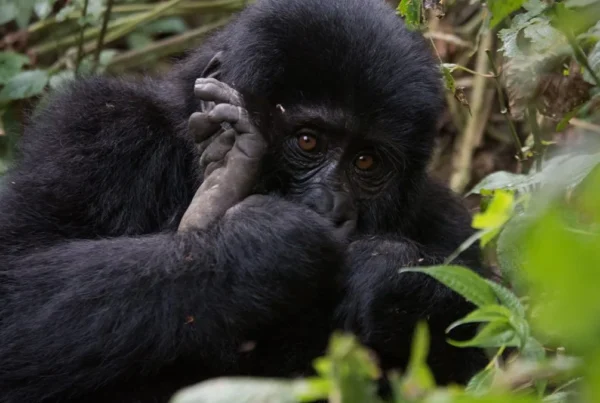5 Fascinating Facts About the Ostrich
Meet the ostrich: a bird that can’t fly, yet can outrun most animals on Earth. It’s a creature of paradoxes—graceful yet gawky, comical yet commanding, prehistoric yet perfectly adapted to the modern African wilderness. Whether you’ve glimpsed one striding across the savanna or seen one bobbing its long neck in a documentary, the ostrich is impossible to ignore.
In this deep-dive, we explore five astonishing, science-backed facts that reveal the ostrich as not just the world’s largest bird, but also one of the most extraordinary animals on the African continent. This is not just trivia—these facts unveil the secrets behind the ostrich’s survival, evolution, and dominance in the wild.
1. The Ostrich Is the World’s Largest—and Heaviest—Bird
Ostriches don’t just tower above other birds—they dominate them. An adult ostrich can grow up to 9 feet (2.7 meters) tall and weigh between 220 to 290 pounds (100–130 kg). Males are typically larger than females and sport bold black-and-white plumage, while females are more subtly camouflaged in dusty brown.
Despite their size, ostriches are extremely well-adapted to life on the open plains of Africa. Their powerful legs not only support their massive weight but also serve as their primary defense mechanism (more on that later). Their height gives them a panoramic view of predators from afar, especially in open grasslands like the Serengeti or Kalahari.
2. Ostriches Can’t Fly—But They Run Like the Wind
Yes, it’s true. The ostrich is a bird that cannot fly. But nature has compensated magnificently. Ostriches are the fastest two-legged animals on Earth. With their long, muscular legs and spring-like tendons, ostriches can sprint up to 70 km/h (43 mph) for short bursts and maintain 50 km/h (31 mph) over longer distances.
Their legs are also their main line of defense. Each foot has only two toes—the larger inner toe sports a long, sharp claw that can disembowel a predator with one powerful kick. Lions and hyenas know not to take the ostrich lightly.
Why Can’t They Fly?
Ostriches are part of a group of flightless birds called ratites, which includes emus, cassowaries, and kiwis. Their flat breastbone lacks the keel that flying birds use to anchor their flight muscles. But their enormous wings (spanning up to 2 meters) still serve vital functions—they’re used for balance while running, courtship displays, and shade for their young.
3. They Lay the Largest Eggs in the World (Facts About the Ostrich)
No surprise here: the biggest bird lays the biggest eggs. But just how big? An ostrich egg is roughly the size of a cantaloupe, measuring up to 15 cm (6 inches) in length and weighing as much as 1.4 kg (3 pounds). One ostrich egg is equivalent to about two dozen chicken eggs.
These eggs are incubated communally. A dominant female lays her eggs in a shared nest called a scrape, dug into the ground. Multiple females may contribute eggs, but the dominant hen and the male do most of the incubation—female during the day and male at night, thanks to their respective feather colors that help camouflage the nest.
Amazing Eggshell Strength
Despite being thin, ostrich eggshells are incredibly tough. They can withstand the weight of a human (not recommended), and their strength helps protect developing chicks from predators and the harsh sun. In some African cultures, emptied ostrich eggs are repurposed as water canteens—a practice that dates back thousands of years.
4. Ostriches Have Incredible Eyesight—and the Largest Eyes of Any Land Animal
Ostriches rely on sight more than sound or smell. Their eyes measure 5 cm (2 inches) across—even larger than those of an elephant. These huge eyes give them an exceptional field of view and long-distance clarity, crucial for detecting predators like cheetahs and jackals in open terrain.
Each eye is so large that there’s barely any room in the ostrich’s skull for its brain—an anatomical quirk that has unfairly contributed to the myth of ostriches being “dumb.” In fact, they’re surprisingly cognitively agile, capable of sophisticated predator recognition and social hierarchy within groups.
The Brain-to-Eye Ratio Myth (Facts About the Ostrich)
While the ostrich brain is smaller than its eye, it’s perfectly adapted for what the bird needs: spatial awareness, motor control, and quick reflexes. So, next time you hear someone joke about the ostrich’s intelligence, remind them that size isn’t everything—especially in the brain department.
5. They Don’t Bury Their Heads in the Sand—But They Do Have Strange Behavior
Let’s bust the biggest myth of them all: ostriches do NOT bury their heads in the sand. This misconception likely arose from a few misunderstood behaviors:
- They often lower their heads to the ground when sensing danger, making their long necks almost invisible from afar.
- They may dig or turn their eggs in the sand using their beaks, appearing as though they’re “hiding.”
Ostriches have evolved far more effective survival strategies than sticking their heads underground. From running at lightning speed to kicking with brutal force, these birds are perfectly equipped to thrive in Africa’s untamed wilderness.
Social Creatures with a Pecking Order
Ostriches live in groups, usually between 5 and 50 individuals, led by a dominant male and female. These flocks offer protection and coordinated vigilance. During breeding season, males engage in elaborate dances to attract mates—drooping wings, puffing feathers, and thumping the ground in rhythmic displays.
Get Up Close with Africa’s Most Iconic Birds
The ostrich is more than just a big bird—it’s a living relic of Earth’s evolutionary history, a marvel of speed, vision, and adaptation. Seeing one in the wild is an experience that leaves a lasting impression.
If you’re ready to witness the magnificence of the ostrich—and countless other wonders of the African bush—there’s no better way than booking your next adventure with WildHorn Africa. Their expertly crafted safari experiences offer immersive encounters with Africa’s most extraordinary wildlife, landscapes, and cultures.
Book Your Safari with WildHorn Africa Today
Facts About the Ostrich #Facts About the Ostrich Facts About the Ostrich





 WildHorn Africa – Authentic and unforgettable tours across Africa, guided by local experts who know the land, wildlife, and culture best.
WildHorn Africa – Authentic and unforgettable tours across Africa, guided by local experts who know the land, wildlife, and culture best.


